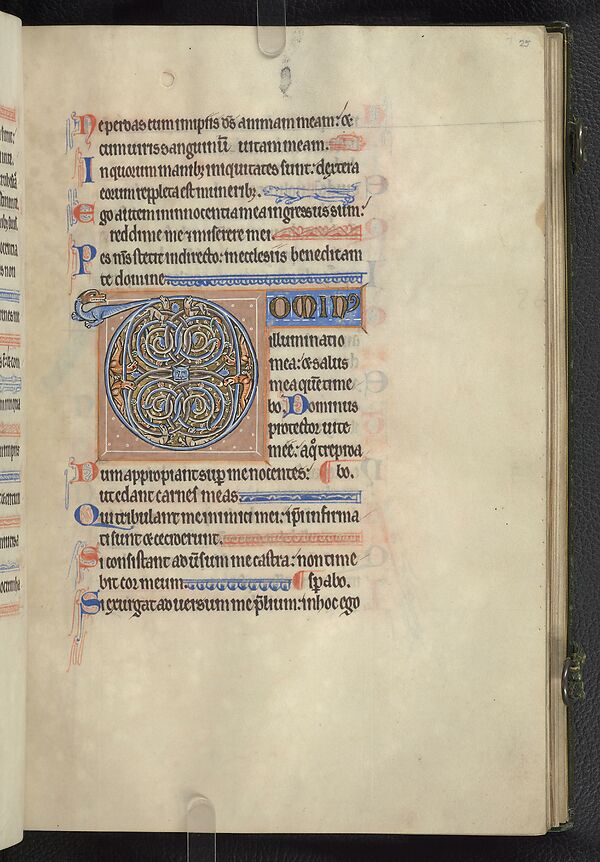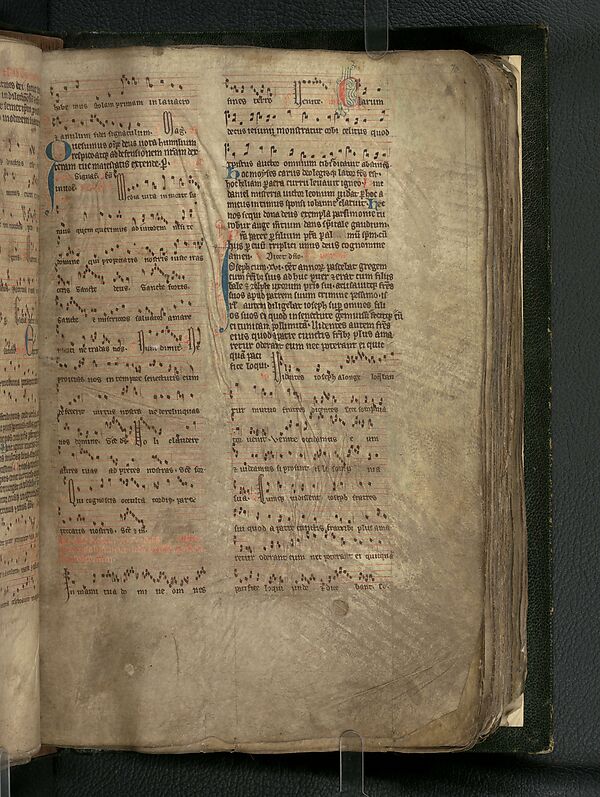Psalters.
Found in 18 Collections and/or Records:
Brigittine psalter and hours, apparently written for an Italian convent., 1535.
Cover of a book (probably an incunable) with a pastedown consisting of a complete vellum leaf from a noted fifteenth-century psalter., 15th century.
The fragment contains Psalms cx(111), verse 1-cxi(112), verse 5, and probably the two preceding psalms.

'Iona Psalter'.

Late 13th-century manuscript known as the 'Sprouston Breviary'.
Manuscript known as the 'Herdmanstoun Antiphonal', or 'Herdmanstoun Breviary'.
Microfilm of Bohun Psalter. Hours and Psalter according to the use of Sarum, made in England for Eleanor de Bohun, Duchess of Gloucester.
Microfilm of Iona Psalter, written in England probably for a nun on Iona.
Microfilm of late 13th century manuscript, known as the 'Sprouston Breviary
Microfilm of manuscript in Gaelic, titled ‘Neil MacBeath’s Psalter’, containing medical notes and Psalm 118, the ‘Divine Office’.
Microfilm of missal, psalters and calendar of Scottish religious houses.
Microfilm of ‘Neil MacBeath’s Psalter’, 15th century-16th century; and, Dean Brown’s prayer book, [circa 1498].
The contents are as follows:
Manuscript in Gaelic, 15th century-16th century, titled ‘Neil MacBeath’s Psalter’, containing medical notes and Psalm 118, the ‘Divine Office’ (Adv.MS.72.1.4);
Dean Brown’s prayer book, [circa 1498], written and illuminated in the Netherlands (MS.10270).
Microfilm of Psalter of French provenance; and, Book of hours.
The contents are as follows:
Psalter of French provenance, 2nd half of 15th century, written for a community of Dominican nuns (MS.7122);
Book of hours, 2nd half of 15th century, probably according to the Use of Rome (MS.7124).
Microfilm of psalters and chartulary, 13th-15th century, of Scottish religious houses; and, 'Lives of the bishops of Dunkeld' by Alexander Myln, 16th century.
The contents are as follows:
Culross psalter, [circa 1470], made for Richard Marshall, Cistercian abbot of Culross (Adv.MS.18.8.11);
Aberdeen psalter and hours, 15th century (Adv.MS.18.8.14);
Ramsay psalter, late 13th century, written for use at Saint Omer (Adv.MS.18.8.8);
15th century manuscript, Chartulary of Scone Abbey (Adv.MS.34.3.28);
'Lives of the bishops of Dunkeld' by Alexander Myln, 16th century (Adv.MS.34.5.4).
Miscellany of medieval manuscripts, chiefly books of hours, which were part of a collection of manuscripts (as well as printed books and paintings) formed by William Finlay Watson, a book-seller in Edinburgh., 13th century-17th century.
In addition to the medieval manuscripts, there are some non-religious books of later date, and a few unrelated fragments.
Miscellany of medieval manuscripts, chiefly books of hours, which were part of a collection of manuscripts (as well as printed books and paintings) formed by William Finlay Watson, a book-seller in Edinburgh; together with a list of the full collection.
In addition to the medieval manuscripts, there are some non-religious books of later date, and a few unrelated fragments.
